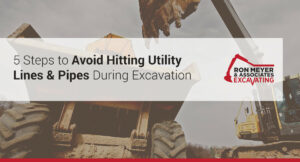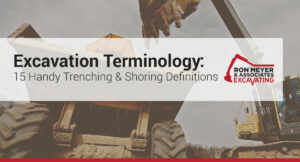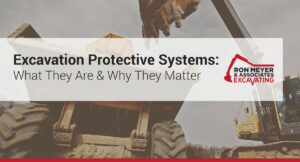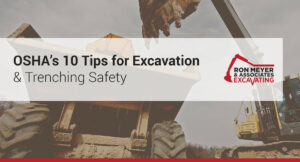To help prevent hitting underground utility lines and pipes during excavation, the OSHA Excavation standards require employers to do the following: Determine the approximate location(s) of utility installations — including sewer, telephone, fuel, electric, and water lines. One common industry practice is to call 811, the “Call Before You Dig” number, to establish the location […]
Excavation & Trenching Safety
Read posts about Excavation & Trenching Safety from Ron Meyer & Associates Excavating, West Michigan excavation contractors.
Excavation Terminology: 15 Handy Trenching & Shoring Definitions
The definitions listed below are sourced from the OSHA Technical Manual and are intended to assist safety and health consultants, OSHA field staff, and others in the recognition of trenching and shoring hazards and their prevention. For additional information about the source of our excavation terminology list, please see OSHA’s Excavations: Hazard Recognition in Trenching and Shoring. Accepted […]
Excavation Protective Systems: What They Are & Why They Matter
There are many hazards to contend with in the construction industry, but excavations are considered to be among the most potentially dangerous undertakings. Excavations are characterized by any cuts made in the ground, followed by the removal of earth, as in digging a trench or other cavities in the Earth. In order to properly protect […]
OSHA’s 10 Tips for Excavation & Trenching Safety
Excavation and trenching are among the most hazardous construction operations. The Occupational Safety and Health Administration’s (OSHA) Excavation standards contain requirements for excavation and trenching operations. Below outlines ten key excavation and trenching safety practices that can protect workers from cave-ins and other hazards. Know where underground utilities are located before digging. Keep excavated soil […]
- « Previous Page
- 1
- …
- 13
- 14
- 15



